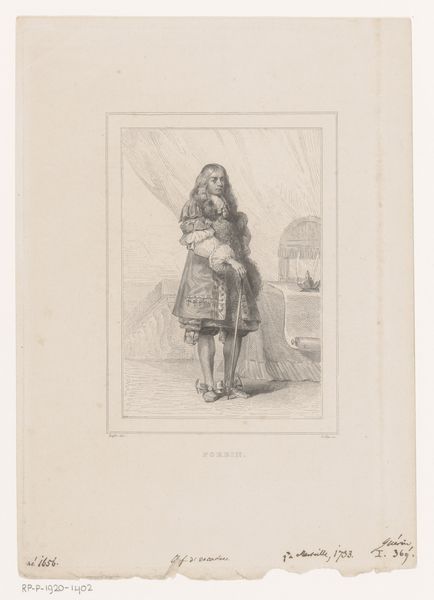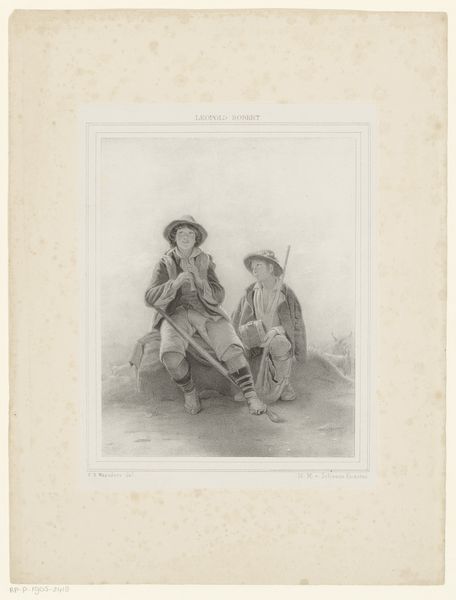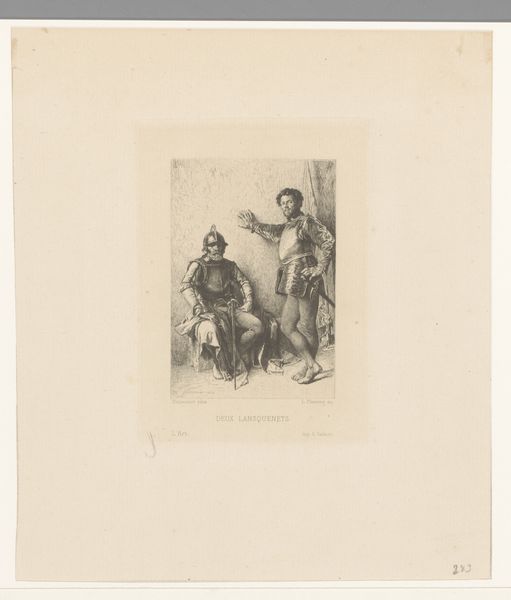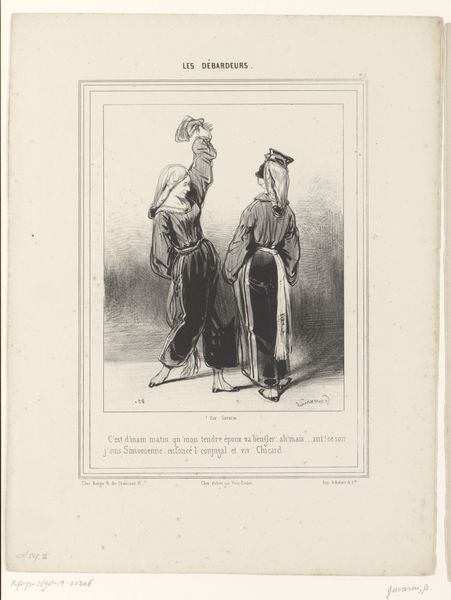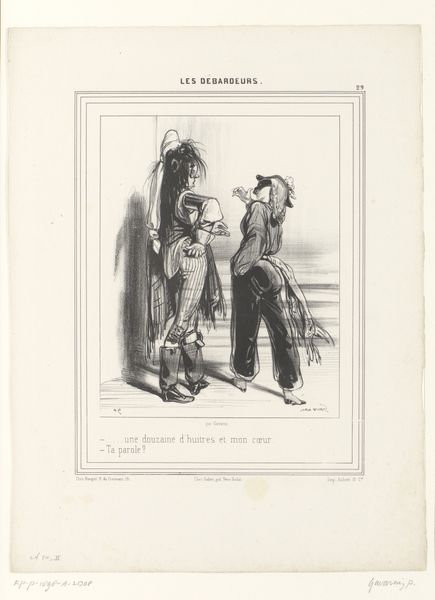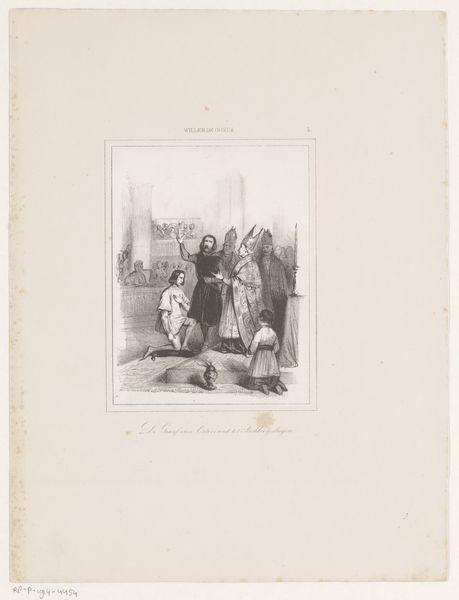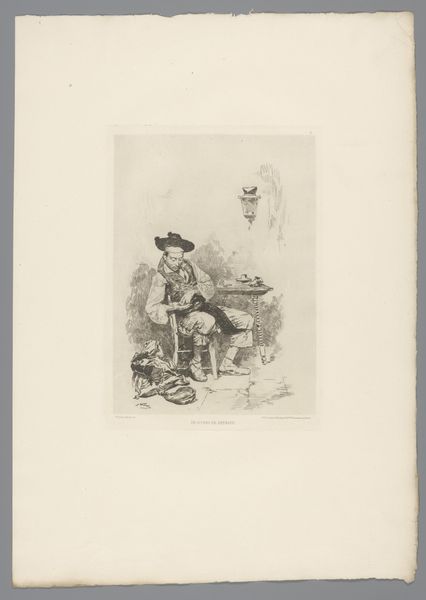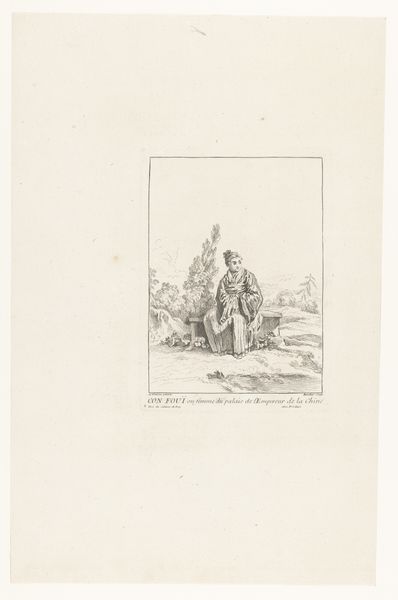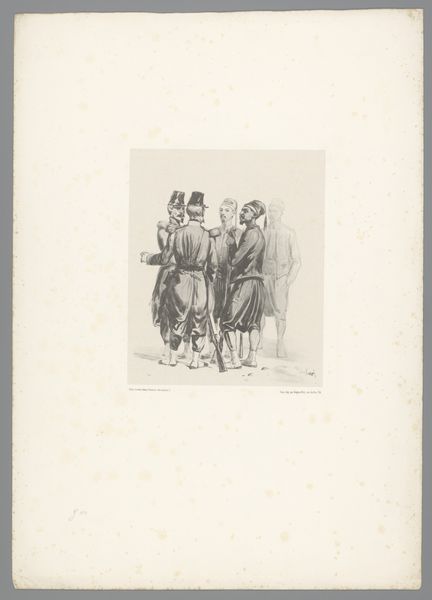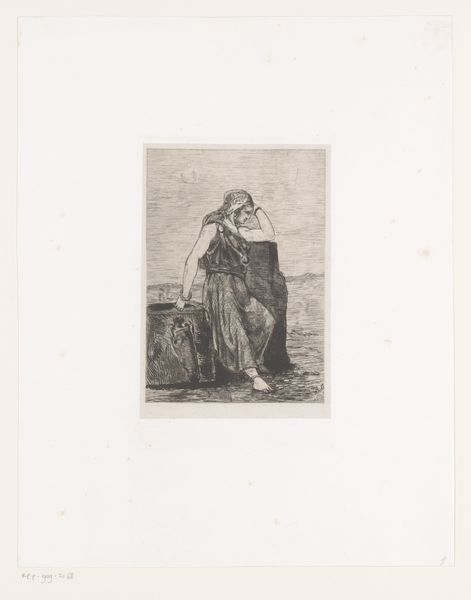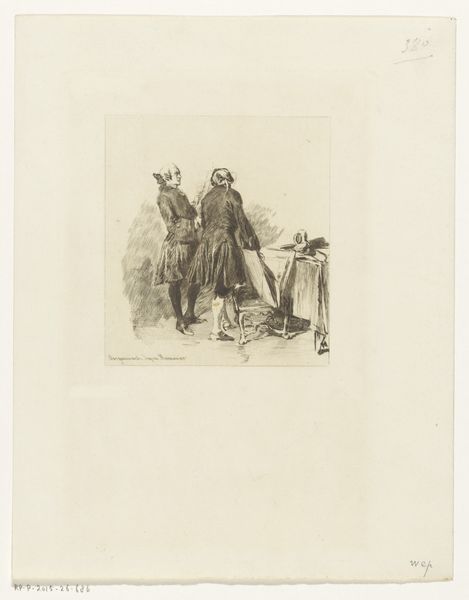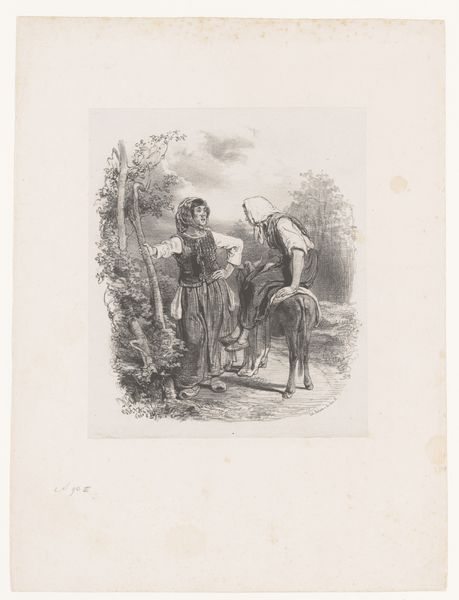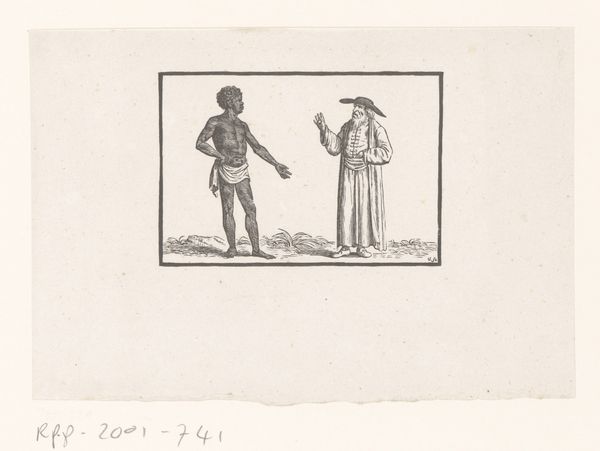
drawing, pencil
#
portrait
#
pencil drawn
#
drawing
#
caricature
#
pencil sketch
#
pencil
#
pencil work
#
genre-painting
#
academic-art
#
realism
Dimensions: height 254 mm, width 171 mm, height 446 mm, width 360 mm
Copyright: Rijks Museum: Open Domain
Curator: This drawing, aptly named "Chique geklede man tegenover oerman"—which translates to "Elegantly Dressed Man Opposite Primitive Man"—is by Jeremias Adriaan Adolf Schill. Created sometime between 1864 and 1902, it's a pencil drawing currently housed here at the Rijksmuseum. Quite a stark juxtaposition, isn't it? Editor: Striking! I’m immediately struck by the visual punchline. It feels like an encounter between civilization and something… untamed. The sheer contrast in their sizes, their attire—it’s almost humorous, in a darkly satirical way. I mean, look at this fancy man in his tailored coat! Then the other, like a wild man with bare skin, and the massive club. They don't quite inhabit the same reality, do they? Curator: The piece definitely leans into caricature, a popular form during that period. It reflects contemporary debates about societal progress versus primal existence, progress, and evolution. The "civilized" gentleman, with his smoking pipe and walking stick, stands in stark contrast to the more naturally adorned "oerman." Editor: Do you think it is mocking refinement? The gentleman does seem a little diminished standing there, physically smaller, a touch absurd. Or maybe it suggests that underneath our fancy clothes, we are all just that primitive man. We all still have an 'oerman' inside us. Curator: I suspect there's more than one way to read it. The late 19th century was a period of intense social change, fueled by industrialization and colonialism. The drawing can also serve as an acknowledgement to European perceptions of the colonised, whose subjugation the well dressed man may well profit from. There's definitely commentary here on perceived societal advancement and its possible downfalls or even hypocrisies. Editor: Hmm, you know, initially, I took it as just a funny image, a simple but powerful clash. But hearing about the historical context of this image—colonialism, social commentary—well, it deepens the layers, doesn't it? It ceases being merely whimsical. Curator: Indeed. Schill’s art is so rooted in the here and now of the time in which he created it. He brings an edge to what could just be read as a caricature, by engaging in what he saw to be wider and ongoing conflicts around him. Editor: Well, it goes to show there’s always more to a simple drawing than meets the eye! An interesting meeting, on a piece of paper, but a good challenge. Curator: Precisely! I feel the discussion also challenges the viewer, to make their mind up as to exactly whose perspective Schill adopted in the artwork.
Comments
No comments
Be the first to comment and join the conversation on the ultimate creative platform.
